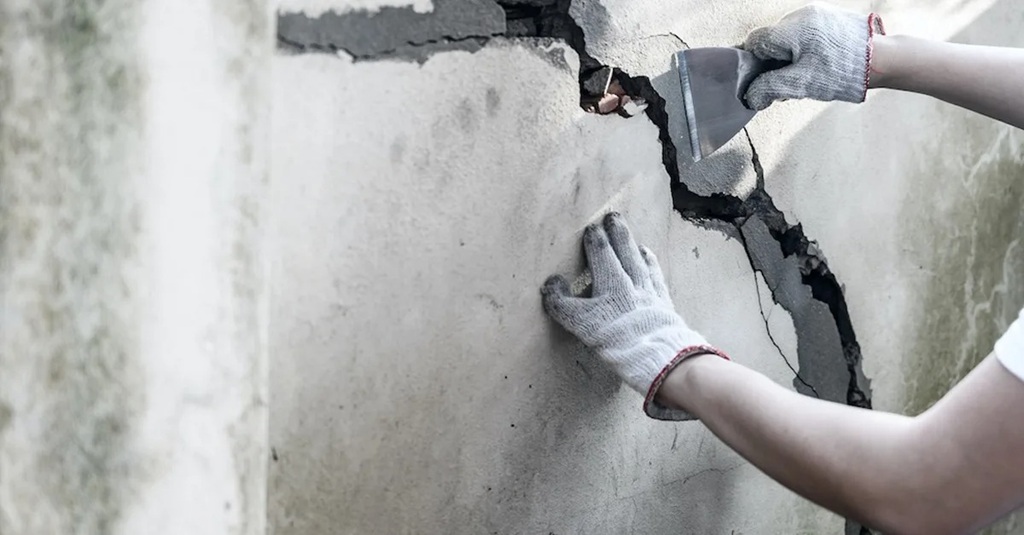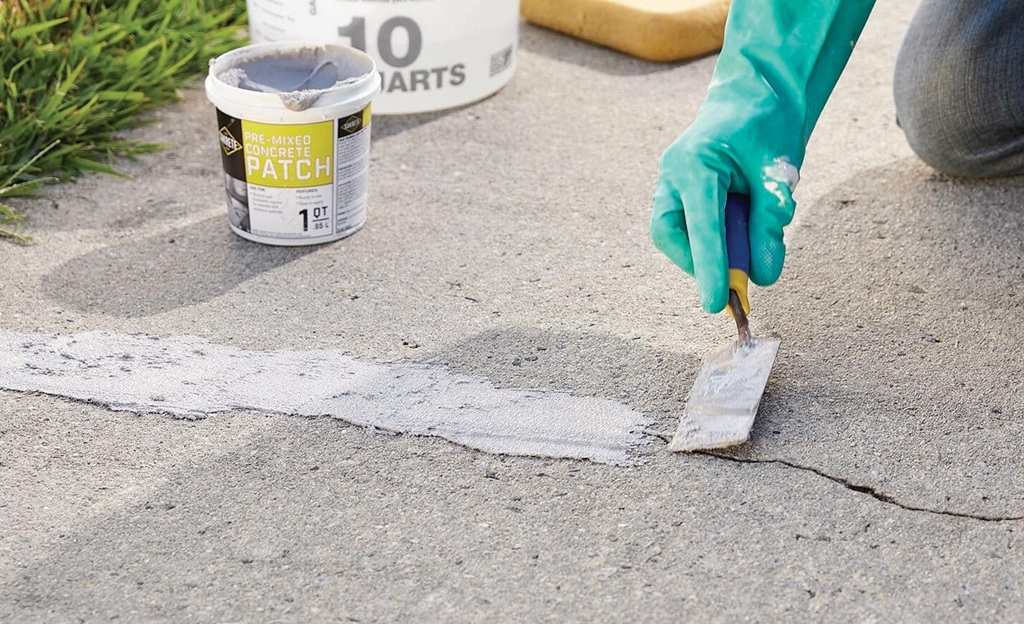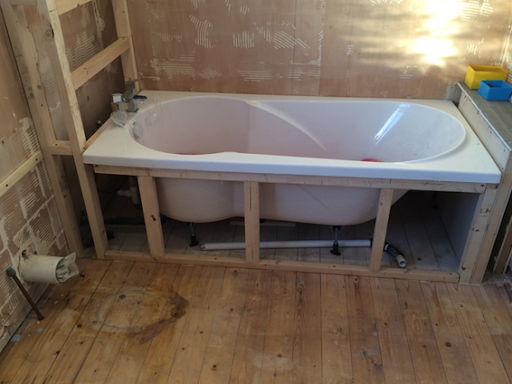Concrete slabs, the backbone of countless structures from driveways to foundations, are unfortunately susceptible to cracking. While some hairline fractures may be merely cosmetic, others can signal serious structural issues, leading to costly repairs and potential safety hazards. Understanding the causes, types, and effective repair methods for concrete slab cracks is crucial for homeowners and professionals alike. This article delves into the intricacies of concrete slab crack repair, offering a comprehensive guide to restoring stability and aesthetics.

Understanding the Root Causes of Concrete Slab Cracks
Cracks in concrete slabs don’t materialize out of thin air. They’re often the result of a confluence of factors, each contributing to the material’s inherent weaknesses. One prevalent cause is shrinkage, a natural process where concrete loses moisture during curing, leading to volume reduction and subsequent cracking. This is particularly common in large, unreinforced slabs. Settlement, another major culprit, occurs when the soil beneath the slab shifts or compacts unevenly, causing stress and fracturing. This can be triggered by poor soil compaction, erosion, or even seismic activity. Overloading, exceeding the slab’s designed weight capacity, can also induce cracks, especially in areas subjected to heavy traffic or equipment.
Furthermore, environmental factors play a significant role. Freeze-thaw cycles, common in regions with fluctuating temperatures, can cause water trapped in concrete pores to expand and contract, leading to cracking. Improper mixing of the concrete itself, including incorrect water-cement ratios or inadequate curing, can also compromise its strength and durability. Finally, lack of control joints, intentionally placed weak points in the slab, can force cracks to occur randomly instead of along designated lines, increasing the severity of damage.
Identifying Different Types of Concrete Slab Cracks
Not all cracks are created equal. Distinguishing between different types is vital for selecting the appropriate repair method. Hairline cracks, thin and superficial, often result from shrinkage and are generally not a cause for alarm. Structural cracks, however, are wider and deeper, indicating significant underlying problems. These cracks may be accompanied by uneven settling or displacement of the slab. Settlement cracks, characterized by a noticeable drop or tilt in the slab, signify soil instability. Map cracking, also known as crazing, presents as a network of interconnected, shallow cracks on the surface, often due to improper finishing.
Furthermore, expansion cracks appear at joints or edges and are often caused by thermal expansion. Plastic shrinkage cracks occur during the initial curing phase and are typically shallow and random. Heaving cracks can be caused by the expansion of frozen soil under the slab. Corner cracks form at the corners of the slab, usually due to stress concentration. Understanding the specific type of crack helps determine the severity of the damage and the urgency of repair.
Effective Methods for Concrete Slab Crack Repair
Choosing the right repair method depends on the type, size, and location of the crack. For hairline cracks, surface sealants such as epoxy or polyurethane can be applied to prevent water intrusion and further deterioration. For wider structural cracks, injection methods are often employed. Epoxy injection fills the crack with a strong adhesive, restoring structural integrity. Polyurethane injection, on the other hand, is flexible and suitable for cracks subject to movement.
Slabjacking, also known as mudjacking or pressure grouting, is used to lift and level settled slabs. This involves injecting a grout mixture beneath the slab to fill voids and raise it to its original position. Polyurethane foam injection is a modern alternative to traditional mudjacking, offering faster curing times and lighter materials. Overlaying involves pouring a new layer of concrete over the existing slab, providing a smooth, level surface. However, this method is only suitable for slabs with minimal structural damage.
For severely damaged slabs, replacement may be the only viable option. This involves removing the old slab and pouring a new one, ensuring proper reinforcement and compaction. Routing and sealing is another method used for wider cracks. The crack is widened with a saw or grinder and then filled with a sealant. Crack stitching uses metal reinforcement bars or staples to bridge the crack, preventing further movement. Each method has its own set of advantages and disadvantages, and the best choice depends on the specific circumstances.
DIY vs. Professional Concrete Slab Crack Repair
For minor hairline cracks, DIY repairs using readily available sealants may suffice. However, for structural cracks or settlement issues, professional intervention is strongly recommended. Professionals possess the expertise, equipment, and materials necessary to perform effective and long-lasting repairs. They can accurately assess the extent of the damage, identify the underlying causes, and select the appropriate repair method.
DIY repairs, while cost-effective, can be challenging and may lead to further damage if not performed correctly. Improper injection techniques, for example, can result in uneven lifting or inadequate filling of the crack. Professional contractors also provide warranties and guarantees, offering peace of mind and protection against future issues. They can also offer expert advice on preventative measures to avoid future cracking.
Prevention: Minimizing the Risk of Concrete Slab Cracks
Prevention is always better than cure. Several measures can be taken to minimize the risk of concrete slab cracks. Proper soil preparation is crucial. Ensuring adequate compaction and drainage can prevent settlement and erosion. Reinforcement with steel bars or mesh strengthens the slab and distributes stress, reducing the likelihood of cracking. Control joints should be strategically placed to accommodate shrinkage and thermal expansion.
Proper mixing and curing of the concrete are also essential. Using the correct water-cement ratio and allowing sufficient curing time ensures optimal strength and durability. Regular maintenance, including sealing cracks and addressing drainage issues, can prolong the lifespan of the slab. Avoiding overloading and protecting the slab from harsh environmental conditions can also prevent premature deterioration.
Read More Also: Finding the Perfect Pool Design Software for Your Dream Oasis
People Also Ask – FAQs on Concrete Slab Crack Repair
Q: How do I know if a concrete crack is serious?
A: If the crack is wider than 1/4 inch, accompanied by uneven settling or displacement, or located near a foundation, it is likely a serious structural issue and should be inspected by a professional.
Q: Can I repair a concrete crack myself?
A: Minor hairline cracks can be repaired with DIY sealants. However, structural cracks or settlement issues require professional expertise.
Q: How much does concrete slab crack repair cost?
A: The cost varies depending on the type and extent of the damage, the repair method, and the location. Professional repairs can range from a few hundred to several thousand dollars.
Q: How long does concrete slab crack repair last?
A: When performed correctly, concrete slab crack repair can last for many years. However, the lifespan depends on the quality of the repair and the underlying causes of the crack.
Q: What is the best method for repairing a settled concrete slab?
A: Slabjacking or polyurethane foam injection are effective methods for lifting and leveling settled slabs.
Q: Are hairline cracks in concrete a cause for concern?
A: Hairline cracks are often superficial and not a cause for alarm. However, monitoring their progression is important.
Q: How can I prevent concrete slab cracks?
A: Proper soil preparation, reinforcement, control joints, and proper mixing and curing can minimize the risk of cracks.
Q: Does temperature affect concrete cracks?
A: Yes, freeze-thaw cycles and thermal expansion can contribute to concrete cracking.
Q: Can water damage cause concrete cracks?
A: Yes, water intrusion can weaken the concrete and exacerbate cracking.
Q: How do I choose a concrete slab crack repair professional?
A: Look for experienced contractors with good reviews, proper licensing, and insurance. Get multiple quotes and ask about warranties.
Read More Also: How to Paint Tile Backsplash: A Step-by-Step Guide to Transform Your Kitchen
Conclusion: Ensuring Long-Term Concrete Slab Stability
Concrete slab crack repair is an essential aspect of maintaining the structural integrity and aesthetic appeal of various constructions. By understanding the causes, types, and effective repair methods, homeowners and professionals can address these issues promptly and efficiently. Whether it’s a simple DIY sealant application for hairline cracks or a comprehensive slabjacking procedure for settled foundations, the right approach ensures long-term stability and prevents costly future repairs. Prevention through proper construction practices and regular maintenance plays a pivotal role in minimizing the risk of cracks. Investing in professional assessments and repairs when necessary is crucial for preserving the longevity and safety of concrete slabs. By taking proactive measures and addressing cracks promptly, you can safeguard your investment and ensure a stable and durable foundation for years to come.




